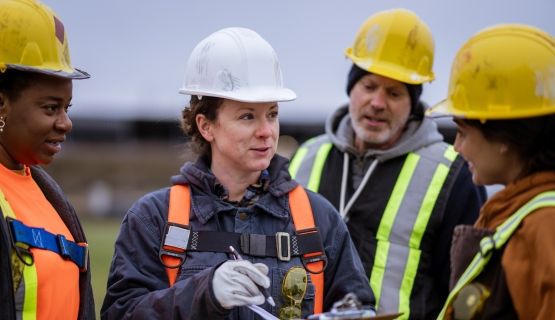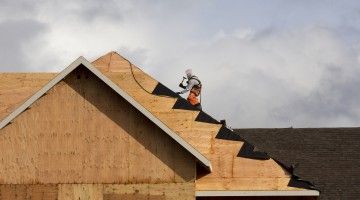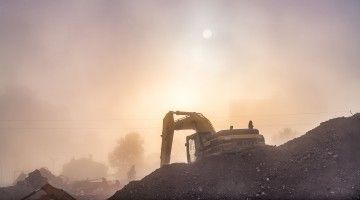Illness/injury prevention
IWH has a long history of conducting research to provide practical guidance to employers, workers, OHS professionals and regulators about what works and what doesn’t in injury or illness prevention. This research targets the injury and illness prevention practices of workplaces, as well as the programs developed by governments, health and safety associations and others to support and motivate workplaces to adopt effective practices.
Featured

At Work article
Differences in firm-level AI use for health and safety
To what extent are Canadian workplaces using artificial intelligence (AI) to help support workers’ health and safety? And what do these workplaces have in common? An IWH study surveyed firms across Ontario and British Columbia to find out.
Published: October 8, 2025

Impact case study
Saskatchewan’s construction safety group uses IWH tool to improve safety culture
This case study details how the Saskatchewan Construction Safety Association (SCSA) members have been analyzing IWH-OPM scores to adjust their safety practices and how SCSA has been using the data to tailor their outreach.
Published: February 10, 2025
IWH Speaker Series
IWH Speaker Series
Safe work integration of newcomers: Employer perspectives
Employers play an important role in the safe and sustained work integration of immigrants and refugees in Canada. Despite this, we know little about employers’ expectations, experiences and challenges in relation to the hiring and retaining of newcomers. In this presentation, Dr. Basak Yanar shares insights gained through a recently completed project on the work integration of newcomers. She discusses the perspectives of employers, as well as the experiences of immigrant-serving organizations that work with employers in promoting safe and sustainable work integration.
Published: October 2020

Research Highlights
Evaluating the effectiveness of mandatory working-at-heights training standards
The introduction of a mandatory training standard for construction workers using fall protection equipment is associated with a 19.6 per cent reduction in the incidence rate of lost-time claims due to falls targeted by the intervention. This decline is larger than an overall decline in injuries in the sector during the same time frame. Reductions in incidence rates are also largest among the smallest employers.
Published: September 2020
Journal article
Journal article
Preventing fall-from-height injuries in construction: effectiveness of a regulatory training standard
Published: Journal of Safety Research, September 2020

At Work article
Comparing the costs, benefits of silica dust prevention methods for construction workers
Construction workplaces can use different methods to reduce exposure to silica dust and protect workers from cancer down the road. But which methods should they opt for? A cost-benefit analysis led by IWH offers some guidance.
Published: August 2020

At Work article
Workers exposed to common hazards more likely to report their injuries: IWH study
Building upon research showing high rates of under-reporting, an IWH study explores factors linked to whether workers report their injuries to a workers' compensation board.
Published: August 2020

At Work article
Understanding challenges in hospitals’ workplace violence reporting systems
How consistently and reliably are hospital violence incidents reported in Ontario? An IWH research team surveyed workers at six hospitals in the province in 2017. Despite mandatory reporting, the results showed great variation in reporting patterns.
Published: August 2020
Project report
Project report
Musculoskeletal injury (MSI) prevention: a practical implementation resource for Newfoundland and Labrador (NL)
Published: June 2020

At Work article
What research can do: How IWH research is responding to COVID-19
COVID-19 affects the work and health of people in Canada and around the world in vastly different ways. Research on the experiences of workers, and the effects of the pandemic on their health, is essential. Here's how IWH researchers are responding.
Published: May 2020

At Work article
Supporting settlement agencies to raise OHS awareness among newcomers
Newcomers to Canada face a higher risk of workplace injury and illness, due in part to a lack of knowledge about their OHS rights and responsibilities. Settlement agencies can help raise this awareness, but they also need support from the prevention system to do so, according to a recent project.
Published: April 2020

IWH in the media
Understanding challenges in hospitals' workplace violence reporting systems
To address workplace violence, we need to understand the size of the problem. That requires having reporting systems that collect reliable and valid indicators of of workplace events, consistently over time and across workplaces. This is not easy, writes IWH's Dr. Peter Smith, drawing on two studies about reporting patterns and challenges at Ontario's hospitals.
Published: Contact, April 2020